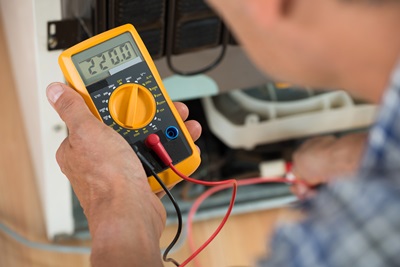Electrical appliances and equipment in any professional setting, and some home settings, are subjected to a test known as Portable Appliance Testing (PAT) to confirm whether they are appropriate, an efficient way of ensuring that electrical equipment is safe. The PAT tester should understand basic electrical modes, mechanical damage to the equipment and the kind of issues that might occur in a work environment.
The type of equipment and where it will be used dictates how frequent the inspection and testing occurs. The test should always be done by a professional in the area. We’re going to cover some of the key areas of carrying out a PAT test.
Table of Contents
-
Preparation for PAT testing
Two main things are to be done before the actual testing begins. First, a basic visual inspection to find any obvious faults. The appliance, cable, and its plug must be verified for any sign of damage. Secondly, asking the user if they are aware of any defects.
At this point, the PAT testing is done to indicate whether the protection is adequate. The following points are a summary of how to carry out PAT Testing:
Testing of the Appliance
Factors that determine the type of tests an appliance will undergo depend on the electrical class of an appliance, the appliance itself and its risk assessment.
Earth resistance test: The resistance brought about by connection leads that face the earth rods is tested. An earthing resistance must always be below 1Ω.
Test for the continuity of the earthing: A measure of the equipment’s protective resistant to the earth circuit that does not go beyond 1Ω is done. An ohmmeter is used for the test. The operator is at liberty to use any test depending on the situation.
The resistance to insulation test: A rated voltage with a value between 5mA to 1mA is performed to test for current leakage. The PAT is used to apply simple voltage to the live conductors an appliance contains. 230V AC is the nominal voltage used. An ohmmeter can also be used to test the insulation resistance.
Testing the safety switches: Two methods may be used. First, an RCD tester is used for the test, and in this case the tester must be joined to an earth terminal. Selection of the testing range delta starts, then the half delta range which protects against inconvenient tripping and finally the delta range where the RCD should begin to operate. Secondly, an applied current test. A current that is same as the estimated tripping current is swiftly applied between protective and active earth. Operating time is then measured, Type I should have a maximum of 40ms while Type II should have a maximum of 300ms.
Reporting on the PAT testing
After the testing and inspection are completed, the tester should give a full detailed report to the owner and advise on any further action to be taken. This of course depends on the level of testing that is done and the use of equipment, with an office phone receiving less scrutiny than a piece of heavy-duty machinery.
A full report is supposed to have an inventory showing the type of appliance, its name, its location and its full description. It should also include the test results of each appliance, any items which failed the test and reason/s for that. Lastly, a label should be applied showing whether the appliance passed or failed the test, with the inspector’s signature.

 same day delivery
same day delivery
 20,000+ stock, great deals!
20,000+ stock, great deals!
 Experienced staff on hand
Experienced staff on hand
